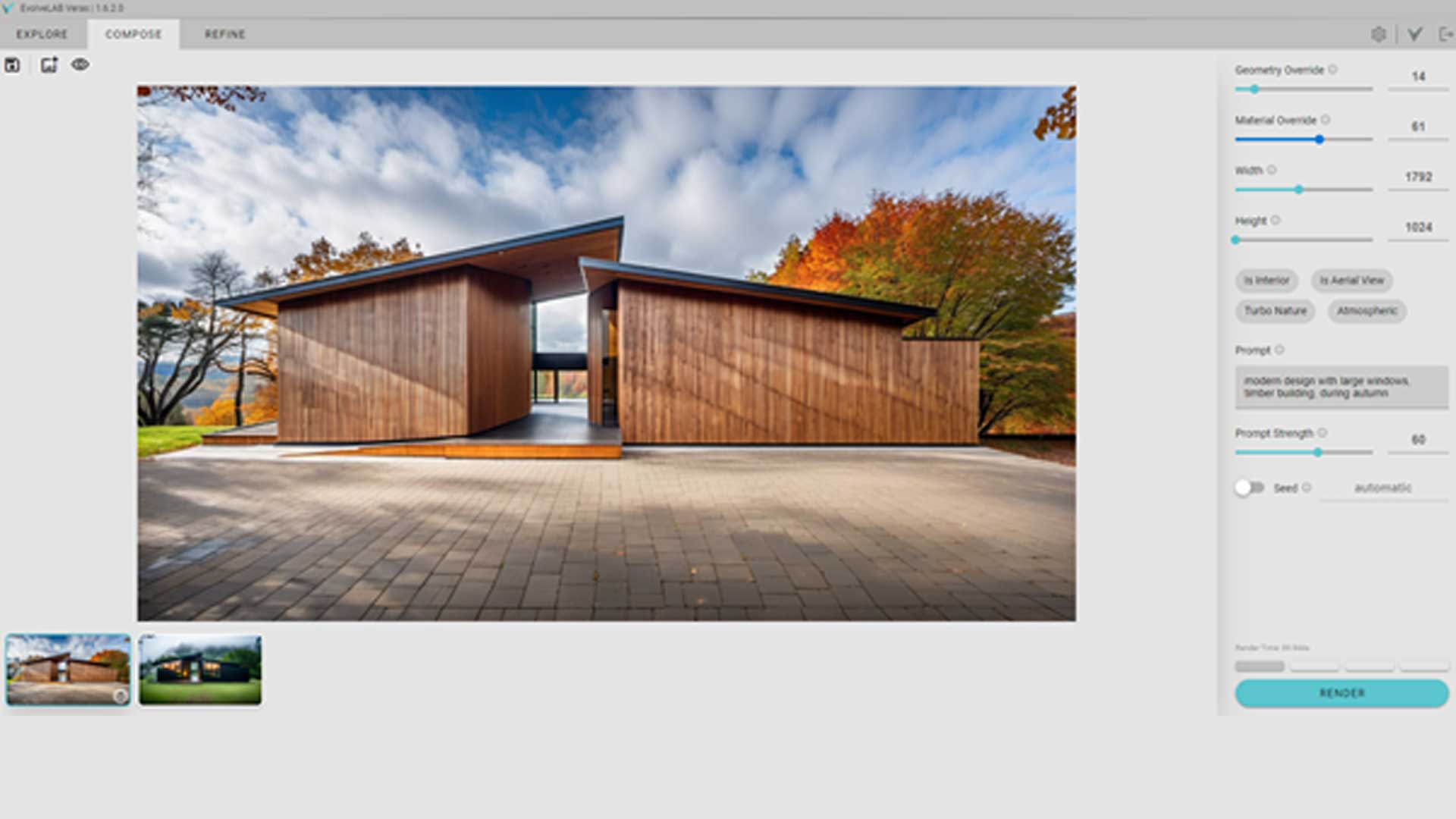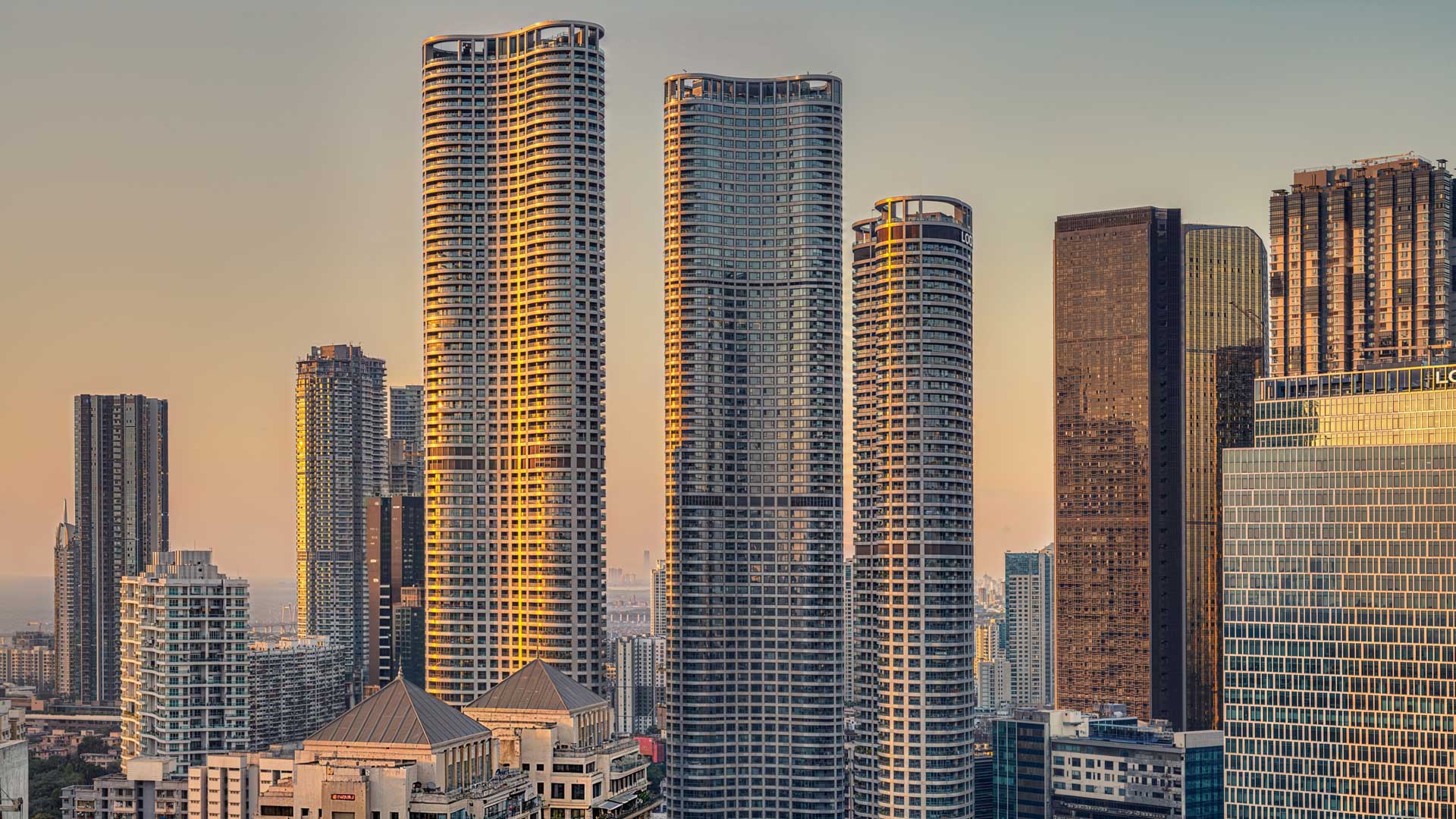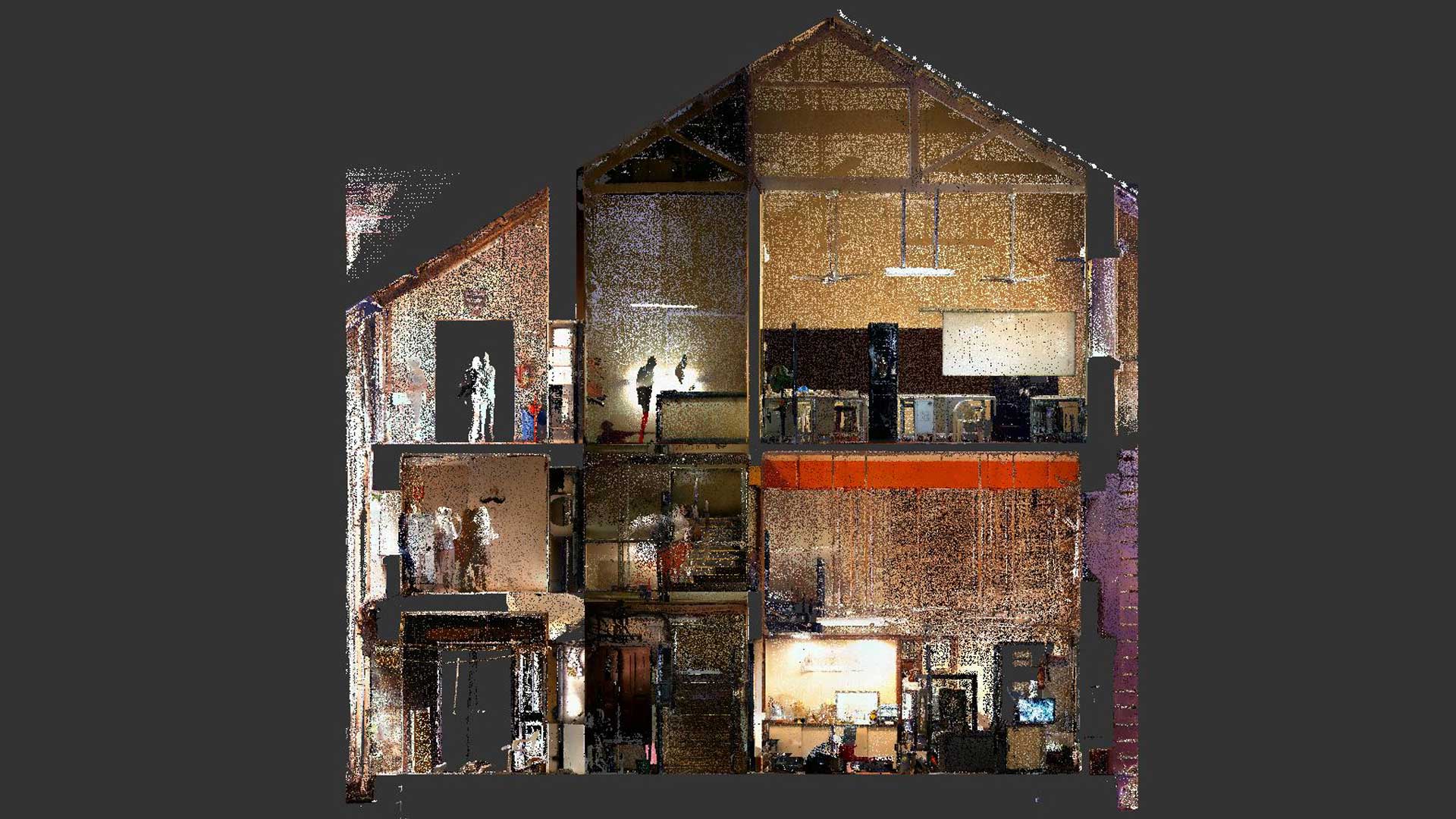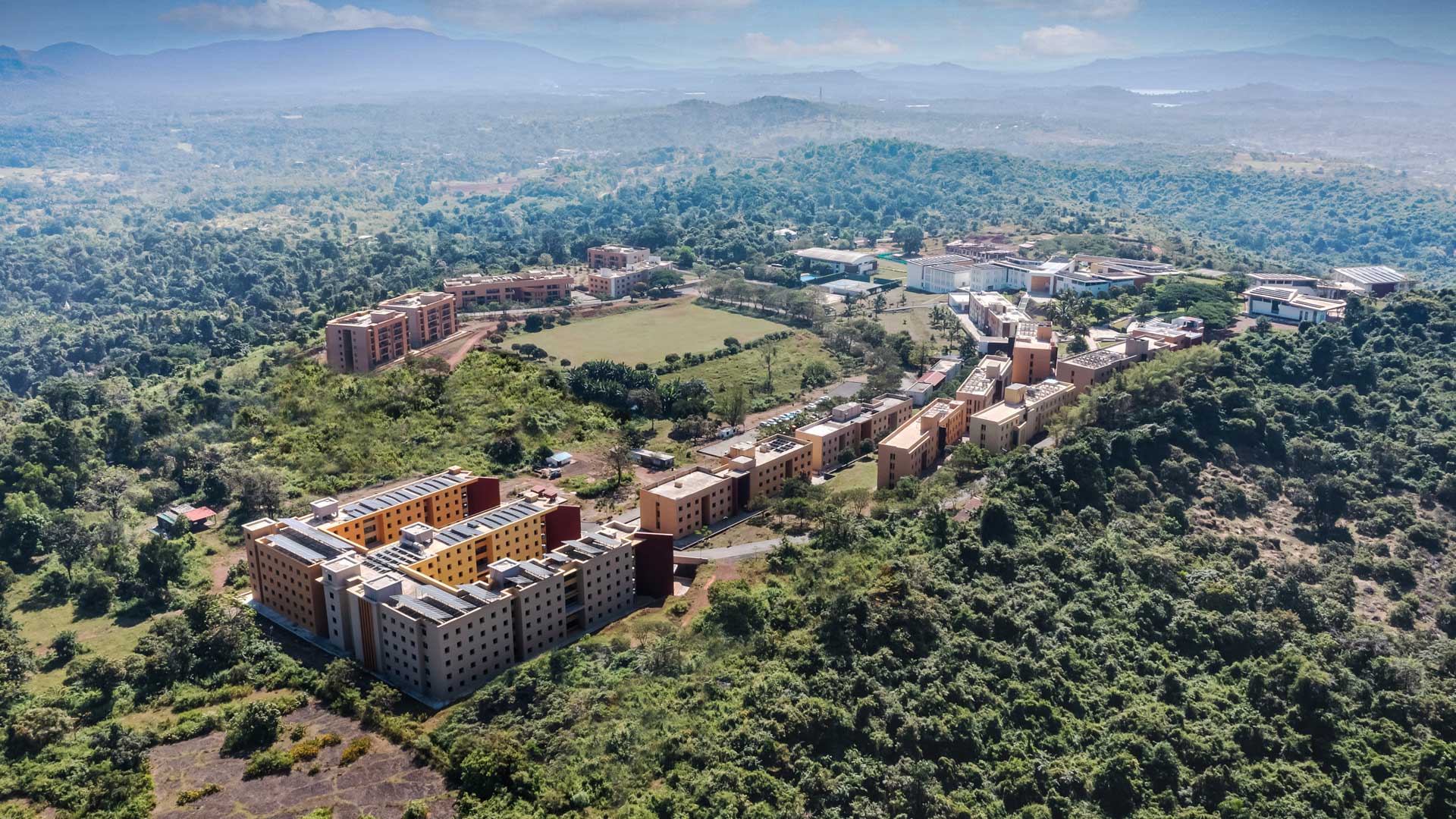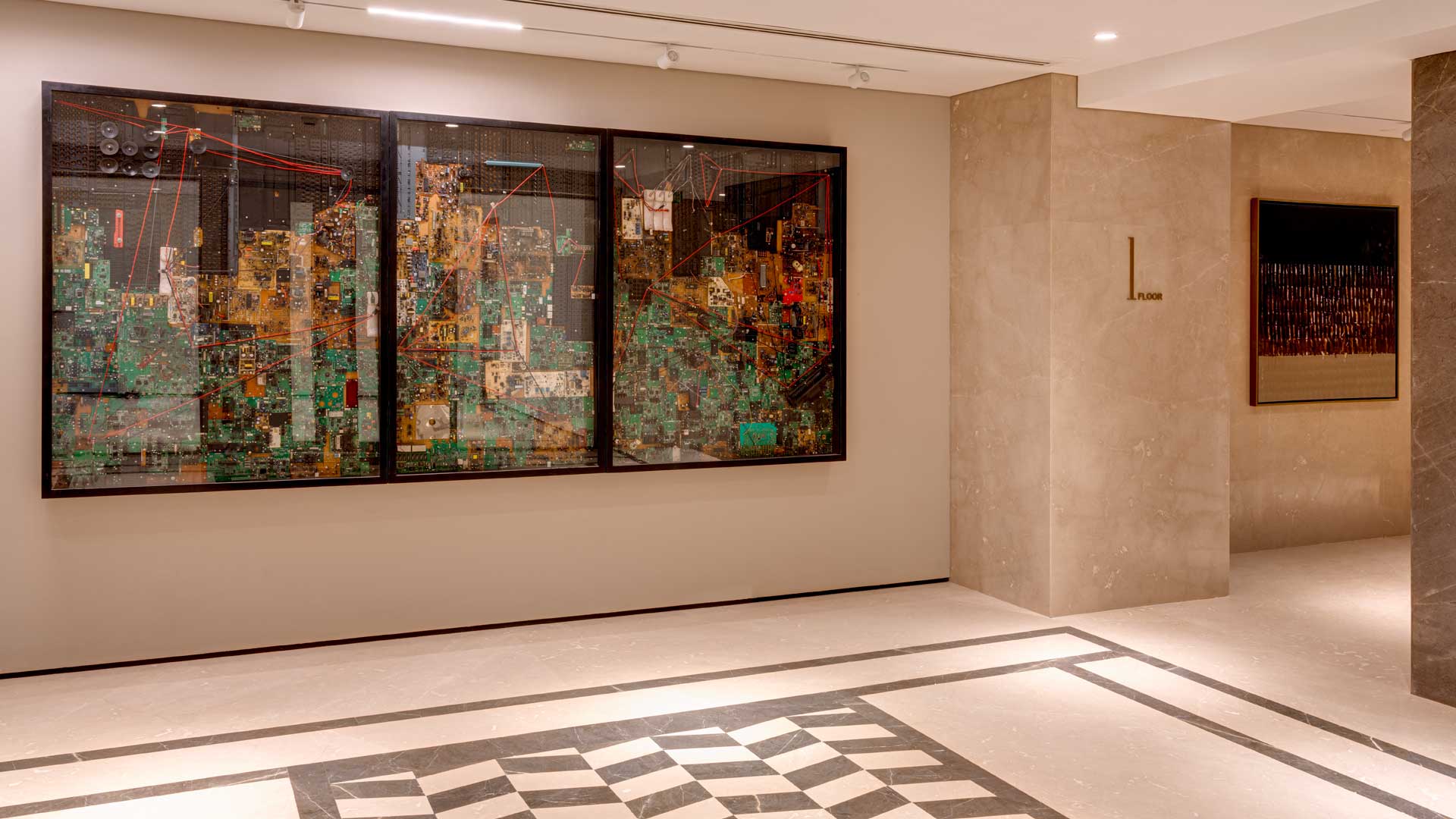Building Sustainability at scale, in harmony with our environment
The 50-acre Goa Institute of Management campus reaffirms our belief that sustainable design comes crafting environments that resonate harmoniously with nature, and their occupants.
Nestled in the foothills of the Western Mountain Range of India or the Western Ghats, on a 50-acre land, is the expansive and dynamic campus for Goa Institute of Management.
The Master plan is designed to integrate various Sustainability elements to build a cohesive eco-system which continuously aims at reducing its carbon footprint. The campus has also taken up various measures along with Somaya Sampat to improve the Campus Sustainability over the past decade.
Water management
Located alongside two hills on the east and west side with a plateau in between groundwater availability is a challenge. The master plan has been designed to channelize the rain water, to a central low point Rain water harvesting pond located on the north central part of the campus, along with 800 cum capacity filtration plant.
Drip irrigation is also installed on campus for landscape and horticulture requirements.
- Hadrian Lobo
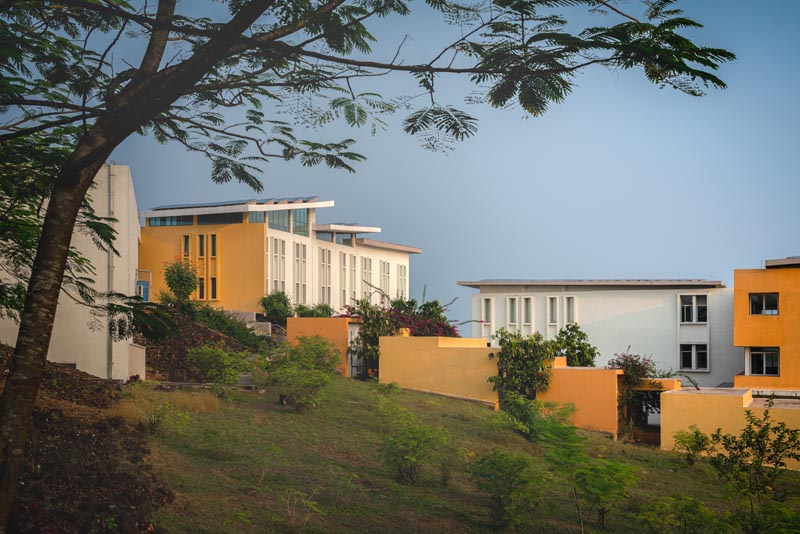
Waste water management
The waste water on campus is treated with two Sewage treatment plants (STP) of 150 KLD capacity each installed in the north and south end of the campus deployed with Submerged aerobic fixed film reactor technology. One caters to the Academic and Shared facilities and the other caters to the Student and Faculty Housing. The treated water is used for Landscape and flushing purposes.
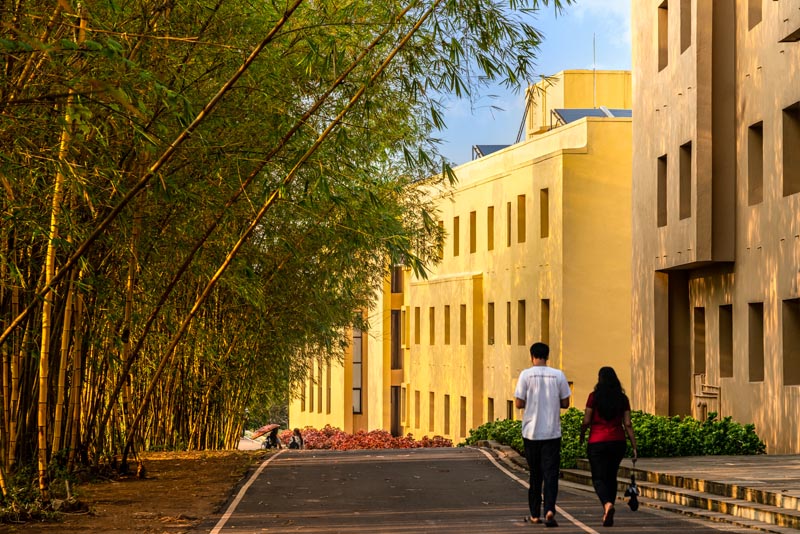
Energy management
To reduce the dependency on the conventional energy grid, GIM has installed one of the largest Solar Photo voltaic (PV) systems in the State of Goa. The installed monocrystalline solar panels generate around 745 kWp for the campus which makes the campus totally self-sufficient for its present power demand.
The north light sloping roofs which are a part of the entire Academic zone design provide the optimum desired orientation for the installation of solar panels which was again seamlessly integrated with the building design.
All Faculty housing and Student housing have been installed with Solar water heater systems with a total 37 KLD hot water generation.
Solar street lights, LED lights and occupancy sensors are installed across the campus for all electrical installations.
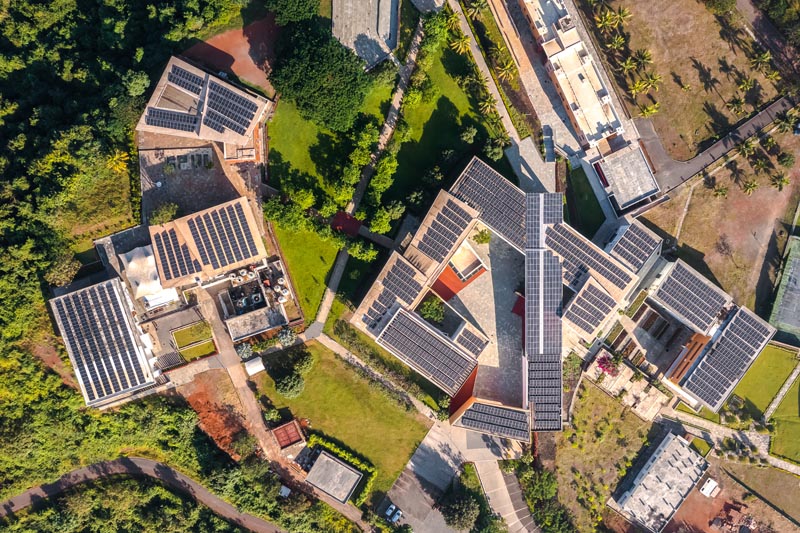
Waste management
GIM has taken several measures to put ‘Reduce – Reuse – Recycle’ into practice for efficient waste management.
GIM follows a Four-bin segregation system for its Dry waste in addition to a separate wet waste bin.
The non-biodegradable waste is collected in a dedicated Dry Waste management facility located in the campus which facilitates better waste segregation, storage and loading. The Goa Waste management Corporation (GWMC) is handed over the waste for further disposal as per the Goa State Government guidelines.
The bio-degradable wet waste generated from the Cafeteria kitchen and housing is managed by a 300 kg per day capacity Bio-gas plant. The Gas generated in the plant is utilised for miscellaneous heating in the Cafeteria kitchen and the fertilizer residue is utilised for the landscape. This plant has been planned with a future capacity expansion to handle a total of 600 kg wet waste per day.
Part of the wet waste is also treated through a Vermicomposting plant.
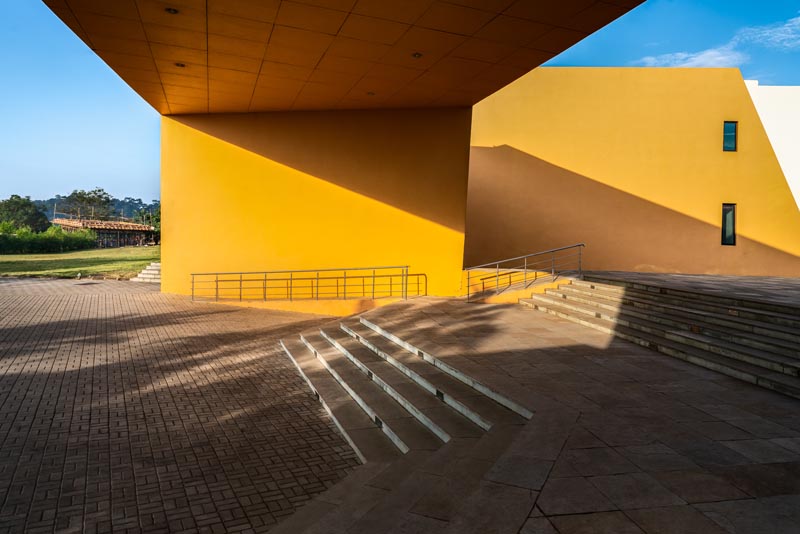
Biodiversity Conservation
Located on the foothills of Western ghats, the GIM campus is a natural habitat for its Biodiversity. Active measures are taken by the campus to enhance the large variety of flora and fauna found on the campus.
- 130 different bird species are documented in the campus.
- Presently the campus is documenting the faunal species including variety of birds, butterflies, reptiles, amphibians, dragonflies, etc.
- 150 floral species have been documented on the campus. These have been photo documented by GIM’s Centre for Excellence in Sustainable Development (CESD). In collaboration with Goa State Biodiversity Board (GSSB) in a coffee table book.
CESD, GSSB, Waste management, Energy management, Waste water management, Sustainability, Materials, Institutional, Commercial

